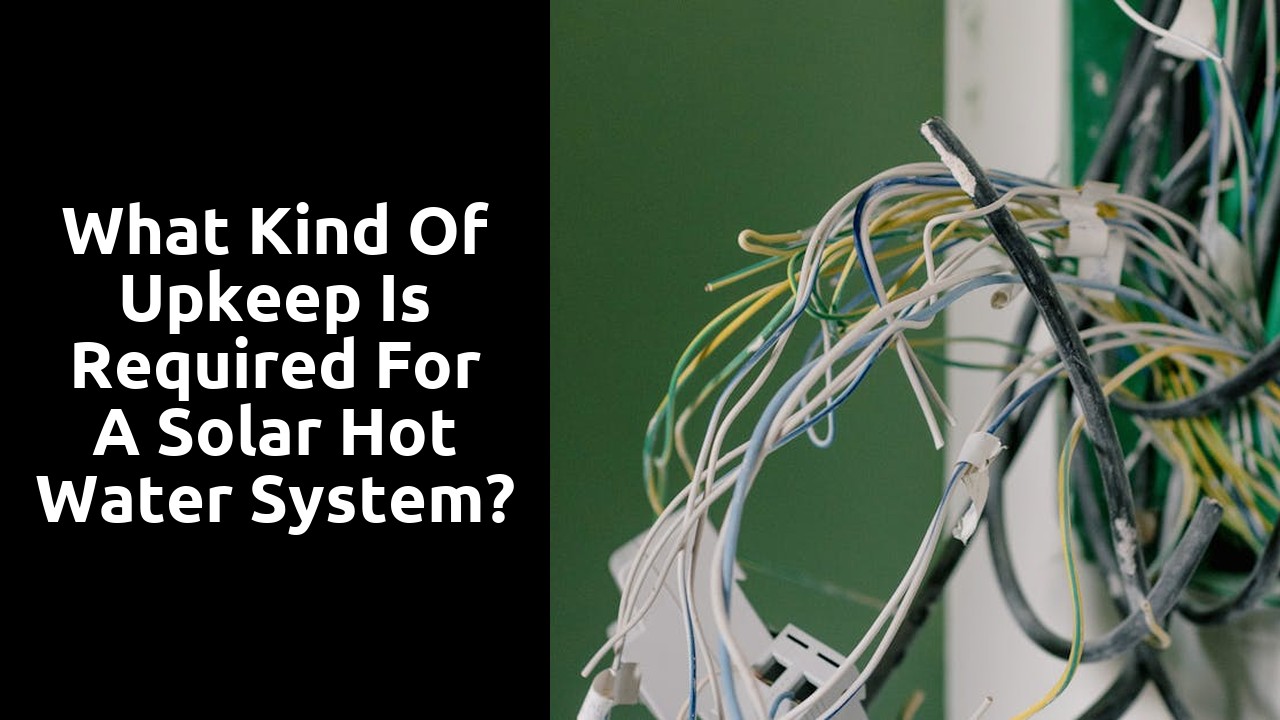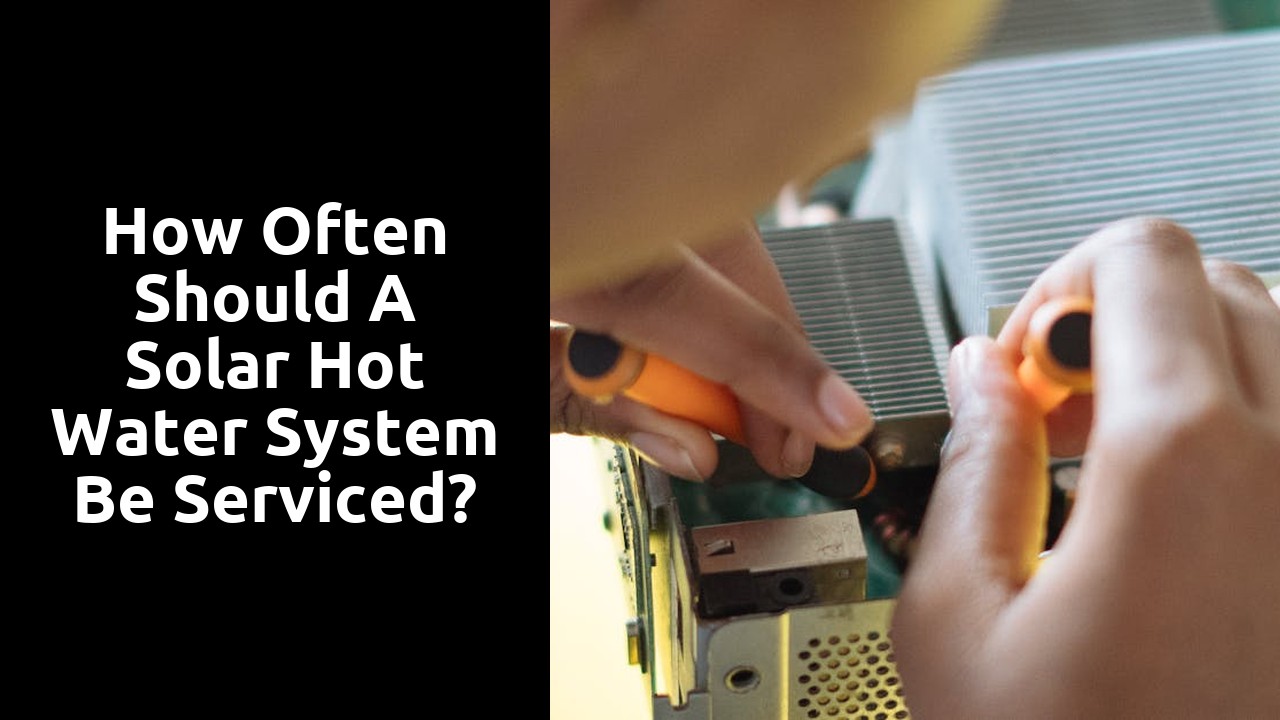
Inspecting the Tank
Inspecting the tank of your solar hot water system is crucial for ensuring its longevity and efficiency. Begin by visually examining the exterior of the tank for any signs of corrosion, leaks, or rust. Look for any water pooling around the base, as this could indicate a leak. Additionally, check the pipes and fittings for any dampness or corrosion.
Next, carefully inspect the temperature and pressure relief valve to ensure it is functioning correctly. The valve is a vital safety component of the system and must be in good working order at all times. Test the valve by lifting the lever and letting it snap back into place. If water continues to flow after releasing the lever, it may be time for a professional inspection or replacement. Regularly inspecting the tank of your solar hot water system is a key component of its maintenance and repair to prevent costly issues down the track.
Draining and flushing the tank periodically
Draining and flushing the tank periodically is a crucial aspect of maintaining your solar hot water system. Over time, sediment and mineral buildup can accumulate inside the tank, leading to decreased efficiency and potentially damaging the system. To ensure optimal performance and longevity of your solar hot water system, it is recommended to schedule regular tank draining and flushing as part of your maintenance routine.
Flushing the tank involves draining it completely and then refilling it to help remove any sediment or debris that may have settled at the bottom. This process helps prevent corrosion and ensures that the system continues to operate efficiently. By incorporating tank draining and flushing into your maintenance schedule, you can extend the lifespan of your solar hot water system and avoid costly repairs down the line. Stay proactive in your Solar Hot Water System Maintenance and Repair to enjoy consistent hot water supply from your system.
Monitoring the Pressure Valve
When it comes to maintaining your solar hot water system, regularly monitoring the pressure valve is crucial. The pressure relief valve plays a vital role in ensuring the safe operation of your system. It is essential to test the pressure relief valve functionality periodically to guarantee it is operating correctly, as any issues can lead to potential safety hazards.
To test the pressure relief valve, simply lift the valve's lever slightly to allow a small amount of water to escape. If water does not flow through the valve or it leaks continuously, it indicates that the valve may be faulty and needs to be replaced. By including this simple yet important step in your regular maintenance routine, you can ensure the optimal performance and safety of your Solar Hot Water System Maintenance and Repair.
Testing the pressure relief valve functionality
Testing the pressure relief valve functionality is a crucial aspect of ensuring the proper operation of your solar hot water system. This valve is designed to release excess pressure in the system, preventing potential damage or overheating. To check if the valve is functioning correctly, simply lift the lever on the valve a few times to release some water. If water flows out freely and stops when you release the lever, the valve is in good working condition. This simple test should be conducted regularly to maintain the safety and efficiency of your system.
Regularly testing the pressure relief valve functionality is a vital part of Solar Hot Water System Maintenance and Repair. Neglecting this important task can lead to potential safety hazards and system malfunctions. By incorporating this quick test into your routine maintenance schedule, you can ensure that your solar hot water system continues to operate smoothly and efficiently for years to come. It is recommended to perform this test at least once every six months to preemptively address any issues that may arise.
Examining the Anode Rod
Examining the anode rod is a key aspect of Solar Hot Water System Maintenance and Repair. This component plays a crucial role in protecting the tank from corrosion by attracting harmful minerals and particles that could cause deterioration. Regular inspection of the anode rod is vital to ensure it is functioning correctly and continuing to safeguard the system.
Due to the sacrificial nature of the anode rod, it will eventually wear out over time and need to be replaced as part of routine maintenance for the solar hot water system. It is recommended to inspect the anode rod annually and replace it when necessary to prevent corrosion and extend the lifespan of the system. By staying on top of examining and replacing the anode rod, you can maintain the efficiency and longevity of your solar hot water system.
Inspecting and replacing the sacrificial anode rod
Inspecting and replacing the sacrificial anode rod is a crucial aspect of maintaining a solar hot water system. The sacrificial anode rod plays a vital role in preventing corrosion within the tank by attracting corrosive elements. To inspect the anode rod, first, locate the access point on top of the tank. Carefully remove the anode rod by unscrewing it from the tank. Check the condition of the rod - if it appears significantly deteriorated or less than half of its original size, it's time for a replacement. Replacing the sacrificial anode rod on a regular basis is recommended to ensure the longevity and efficiency of your solar hot water system.
When replacing the sacrificial anode rod, it is important to choose a suitable replacement based on the manufacturer's recommendations. To begin the replacement process, carefully insert the new anode rod into the tank and secure it by screwing it tightly. Ensure that the anode rod is installed correctly to guarantee proper functioning. Regularly inspecting and replacing the sacrificial anode rod is a fundamental component of Solar Hot Water System Maintenance and Repair, ensuring that your system operates effectively and endures over time.
FAQS
What is the importance of inspecting the tank of a solar hot water system?
Inspecting the tank regularly helps in identifying any potential issues such as leaks or corrosion, ensuring the system operates efficiently.
How often should the tank of a solar hot water system be drained and flushed?
It is recommended to drain and flush the tank of a solar hot water system at least once a year to remove sediment buildup and maintain optimal performance.
Why is it important to monitor the pressure valve of a solar hot water system?
Monitoring the pressure valve ensures that the system is operating within safe pressure limits, preventing potential damage or accidents.
How can I test the functionality of the pressure relief valve in a solar hot water system?
You can test the pressure relief valve by lifting the lever to release some water, ensuring that water flows freely and the valve is operating correctly.
When should the sacrificial anode rod in a solar hot water system be examined and replaced?
The sacrificial anode rod should be examined annually for corrosion and replaced if it is significantly worn out to protect the tank from rusting.
